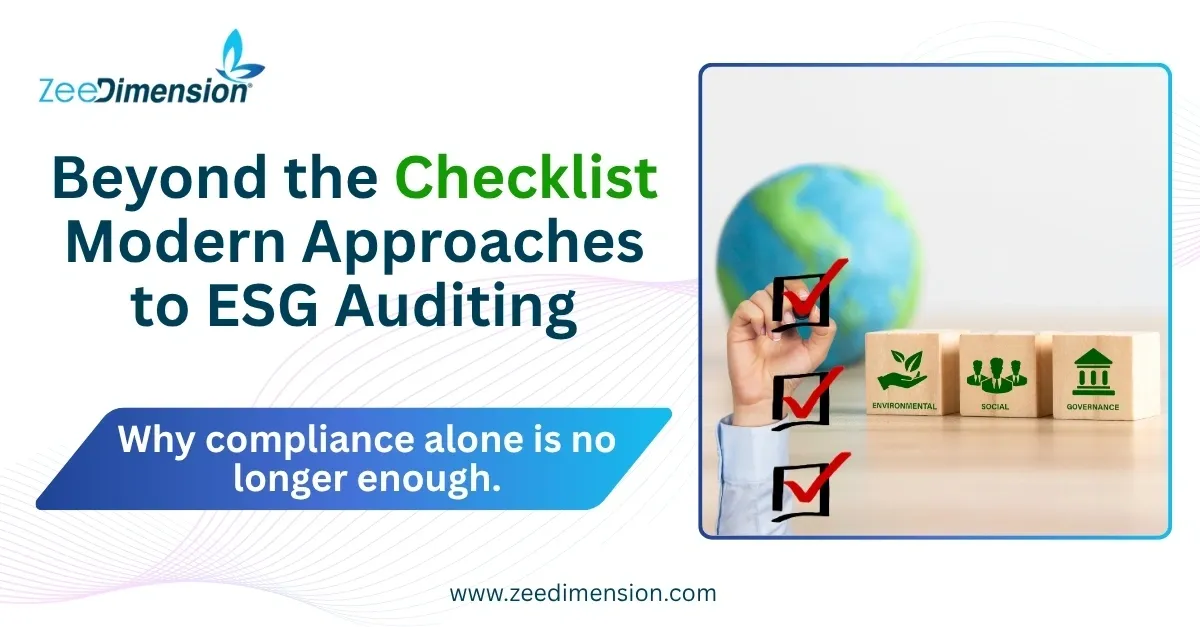
Beyond the Checklist Modern Approaches to ESG Auditing
ESG auditing is no longer about ticking boxes. Today’s stakeholders demand real proof of impact—not just policies on paper. Compliance alone won’t meet rising expectations from regulators, investors, and society.
From Compliance to Impact
Traditional audits focused on static checklists. Modern ESG auditing is dynamic—adapting to evolving regulations (GRI, SASB, CSRD), combining both forward-looking and historical indicators, and ensuring continuous relevance.
Data-Driven and Real-Time
Advanced audits leverage data from IoT sensors, ERP, HR, and supply chain systems. AI-driven analytics now enable real-time monitoring and risk detection, moving beyond periodic assessments to continuous ESG assurance.
Stakeholder-Centric Auditing
Effective ESG audits now integrate feedback from employees, investors, communities, and customers. Tools like surveys and sentiment analysis assess not just compliance, but authenticity and stakeholder trust.
Double Materiality: Inside-Out & Outside-In
Modern audits assess:
-
Outside-In: How ESG risks affect the business.
-
Inside-Out: How business impacts society and environment.
This dual lens embeds ESG into enterprise risk management and strategic decision-making.
Technology as an ESG Enabler
Blockchain, NLP, climate scenario modeling, and automated ESG scoring are transforming audits from static reports to dynamic, transparent validations of real impact.
ESG: A Business Advantage
When done right, ESG auditing drives efficiency, builds trust, and aligns sustainability with growth. It’s not a reporting task—it’s a strategic enabler and a competitive edge.
Final Thought
The checklist era is over. ESG audits must be adaptive, data-driven, and impact-focused. The real question: Is your ESG audit keeping up?








